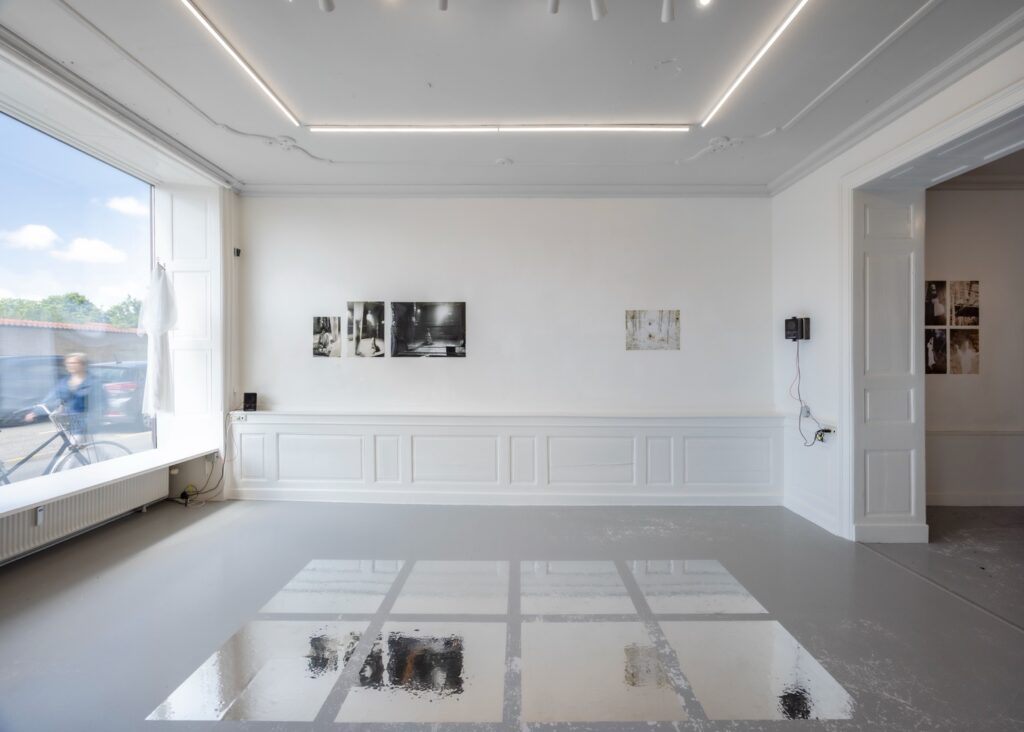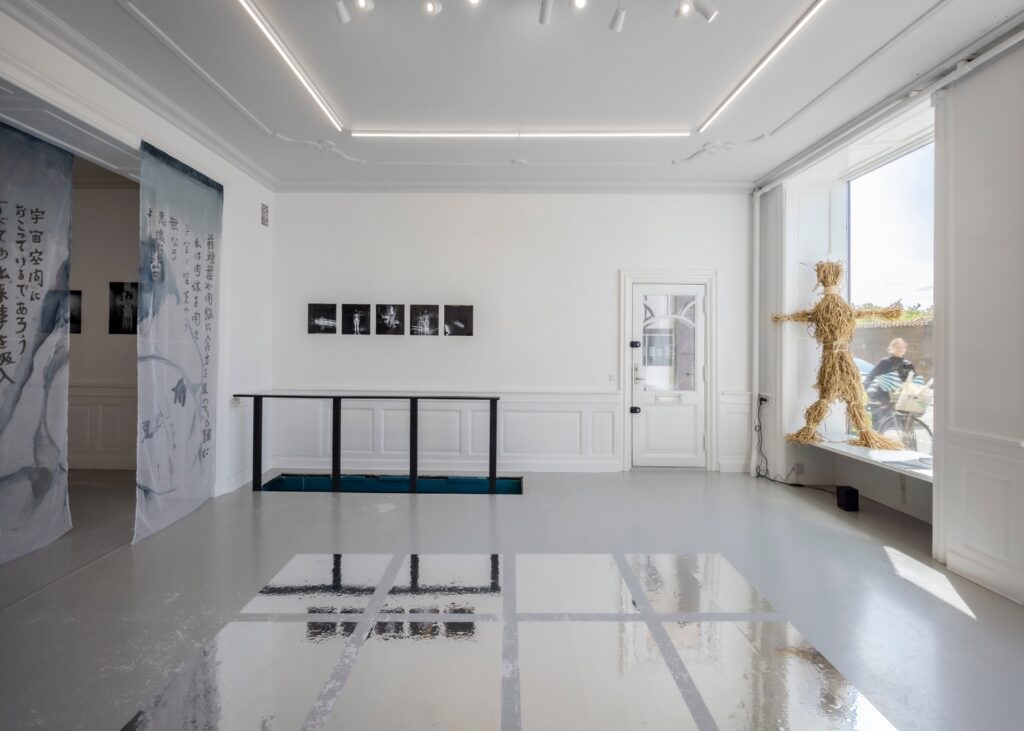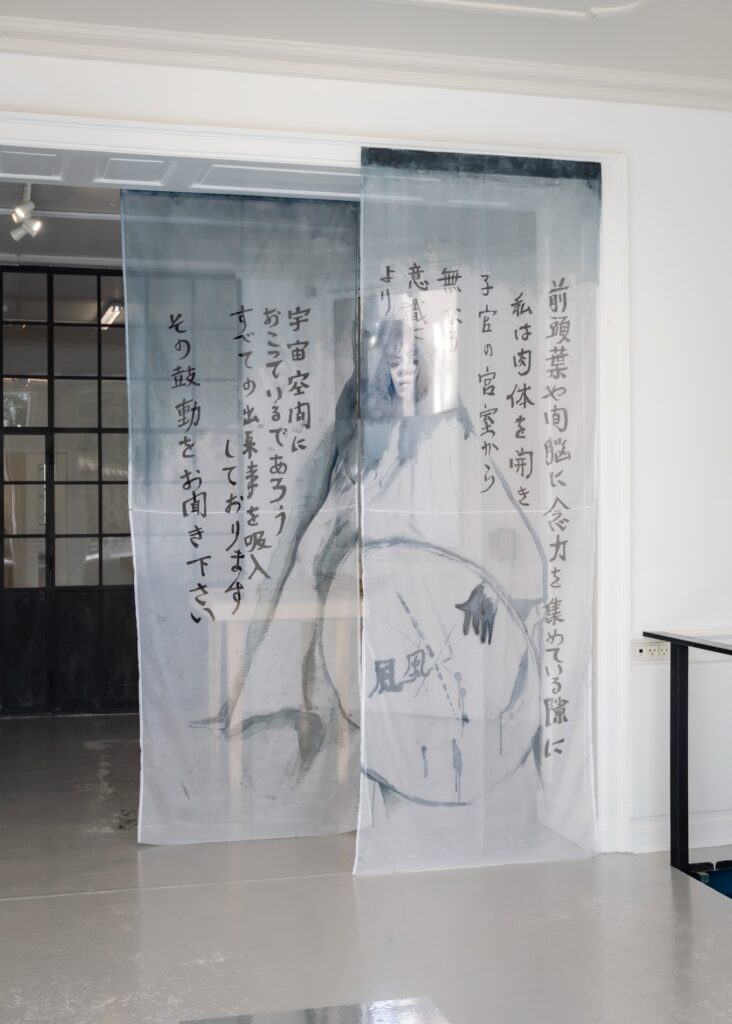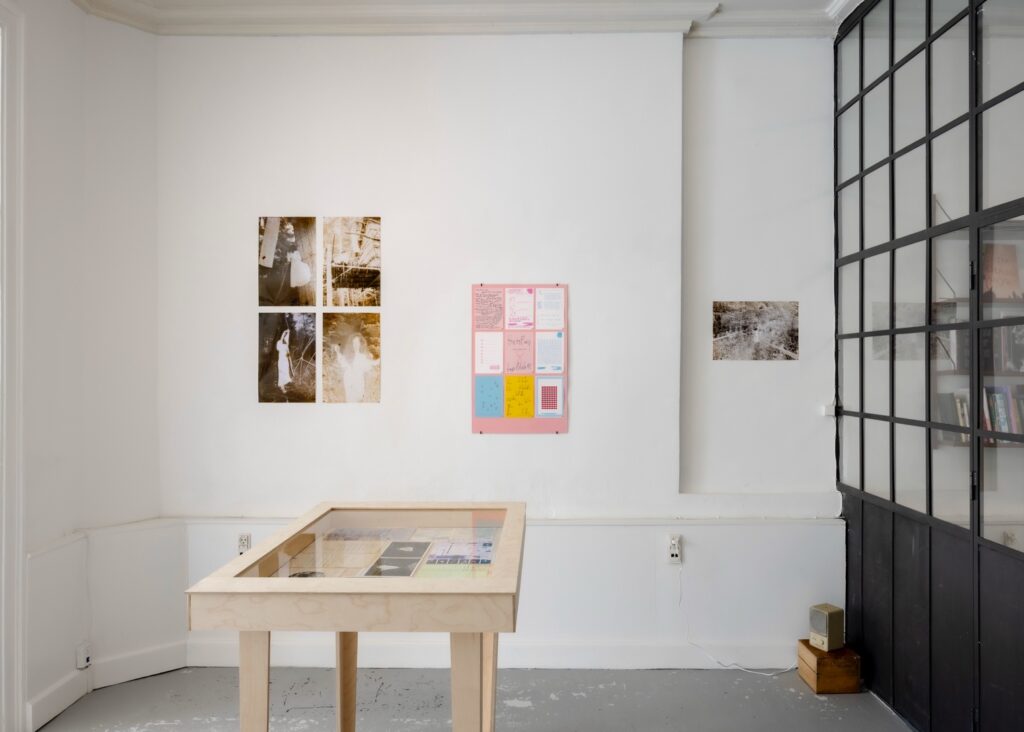– How to Play (Four studies for Ensemble or Soloist)’ and ‘Sextet’
For the second interview in relation to the exhibition Disappearing Body – Becoming Tsujimura at Heirloom in Copenhagen, revolving around the Japanese performance artist Kazuko Tsujimura, I interviewed Danish artist Aase Nielsen.
Nielsen is a composer, producer, and sound artist known for her experimental approach to composition, score practice, and performative sound art. Over several years, she has worked with hybrid concert forms and interdisciplinary collaborations. Exploring the relationship between body and sound, she often works at the intersection of avant-garde, experimental music, open score formats, sound installation, and improvisation.
Karn Hald [KH]: In the exhibition you had two works, How to Play (Four Studies for Ensemble or Soloist), which is a graphic composition and a live performance. The other work, Sextet, was a sonic landscape, played from six speakers, placed in the corners of the room.
I want to ask about the process of creating these works and how you perhaps feel seen in the works of Tsujimura? How does a practice from the 1950s in Japan resonate with the subversive approach to modern composition which is central to your practice?


Aase Nielsen [AN]: How to play is a work already long in process, written initially as a pedagogical tool in 2017 and later developed with different ensembles and students, but always used strictly as an internal infrastructure or memo, never publicly announced.
In my meeting with Tsujimura’s practice and the archive through Yoshiko Shimada’s work and the curators Bluestockings facilitation/curation, I was presented to the concept of On-e and the collective Parinirvarna Pariyaya Body (PPB), with extended collective performance practices and unconventional concert formats. I felt a direct relation to the thoughts at play in How to play and it is therefore presented in its entirety and sort of final form, in this expansive context.
I felt a lot of parallels between these two modes of producing collectively. How to play tries to facilitate assembly and negate individuality and one of its products, originality (and its product originality).
It’s a sort of infrastructure that, among other things, facilitates a collective negotiation of the musical material in the piece. In writing about infrastructure, I’m drawing on knowledge from a part of my practice that has lent itself to what I would call a kind of devotional music. Not in the classic religious sense, but a musical practice that is devoted to the act of being with others, neither to the product or the performance or the quality hereof, but the practice of an active togetherness.

A sort of praxis perhaps, which to me, shines out of Tsujimura’s work and concepts is this quote from the PPB group, that prompted me to present work dealing with collectivity:
“PPB is always one body, but, at the same time, the group of parted individuals. It is a ring and points to multiplying without limitation. This relation is always complex however we may be environed with the audience”
In making the sonic landscape for the exhibition I utilised the framework of How to play to produce a sort of soundtrack for the whole. In a way I misused the composition a little bit, but it is worth noticing that this infrastructure also is embedded with formal musical qualities that could be used in this context.
The piece is constructed in a way, so it is perpetually becoming, its form is rhizomatic so to speak, without a beginning and end or an overall general timeline.
Yoshiko shared with us a quote from Matzusawa, a note on a model commune (which is also displayed in the exhibition):
‘United Cores
It is a group of nucleus satellites that freely perform centrifugal and centripetal movements, and as a whole has a world line that is oriented toward Nirvana. Each nucleus (core) has its own direction and body, but they are able to share and sympathize with each other with a warm heart. It is open.’
This was further motivation to present, exhibit and perform this piece in this context, as the ‘organisation’ or movements of the voices in this piece works in a similar way.
So, in Sextet I recorded six solo performances of How to play, performed by Binna Isabella & myself, to loop un-synchronised from six speakers, then performed a version of the piece stretching throughout the 1,5 month of the exhibition.

In recording the six solos I drew inspiration from the archive material of Tsujimura and the expressive performance documentations. The confrontative silence of the photographs. The negation of the idea of performance. And at the same time thought of the music as the carrier of different temporalities, mediating between then and now, speaking to this specific past, but also this specific present, where it also functioned as a soundtrack accompanying two of Body_hacker´s performances.
I relate to Tsujimura’s practice on different levels. On the collective level as mentioned, where I feel a kinship, but also in what I read as an overall pessimistic relation to gender and its performance under hetero patriarchal capitalism that also extends to performance in general.
In terms of the resonance, I think that the western music traditions that my work in composition draws upon and struggles with, owe a lot, if not everything, to (spiritual) concepts originating from Japan and East Asia in general. These practices presented in the exhibition pre-dates John Cage’s first visit to Japan for example and his consequent obsession and appropriation of its traditions of thought. Yoshiko Shimada has coined the concept of Radical Spiritualism in thinking with the practices of Tsujimura and Matzusawa, that with its anti-imperialist sentiments strike me as particularly hardcore and relevant, compared to its later western dilutions and appropriations.
